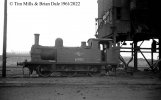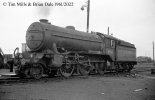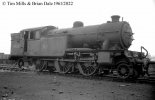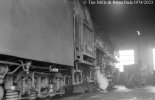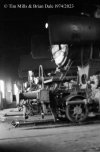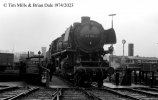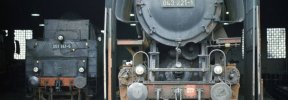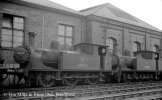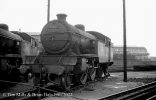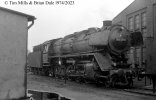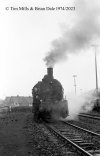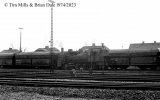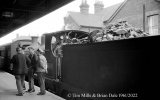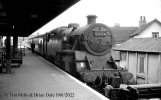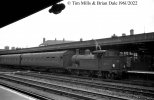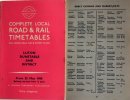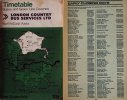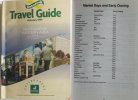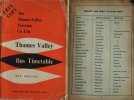If like me you’re not familiar with Hull and its railway environs, a brief note about locomotive sheds. The town was served by two major railways, by far the biggest was the North Eastern Railway with extensive goods traffic and an engine shed at Hull Dairycoates which supplied locomotives for that. It also had a large passenger station at Paragon adjacent to which was Hull Botanic Gardens Shed, principally allocated with passenger engines.
The other railway was the Hull & Barnsley Railway which had a large works and locomotive shed at Hull Springhead and a stabling point at the side of Alexandra Dock, in reality two sidings in the open. This latter provided shunters for dock traffic exclusively.
Both railways became part of the LNER and subsequently the NE region of BR.
Originally Dairycoates shed was 53A, Botanic Gardens 53B, and both Springhead and Alexandra Dock 53C. Springhead closed in Dec 58 immediately prior to the amalgamation of the NE and E regions at which time (Jan 60) the shed allocations for the new ER became Dairycoates 50B, Botanic Gardens 50C, Alexandra Dock was retained as a stabling point only, it subsequently closed in Oct 63. Botanic Gardens closed to steam in Jun 59 being converted to a railcar depot and Dairycoates became the only steam shed in Hull until 1968.It closed completely in 1970.
68672 Starbeck 1/7/24, Neville Hill 1/5/26, Dairycoates 17/3/57, Alexandra Dock 21/7/57, Dairycoates 1/2/59, Wdn 23/10/61, Into Darlington for cutting 7/2/62.
69020 York 27/1/50, Dairycoates 21/2/60, Darlington 7/10/62, Wdn 28/12/63, Sold T.J.Thompson 12/64.
67682 Gateshead 15/9/39, Stockton 28/5/50, Gateshead 1/10/50, Hexham 2/1/55, Botanic Gardens 25/1/59, Dairycoates 14/6/59, Darlington 19/11/61, Wdn 23/9/63, Into Darlington for cutting 29/11/63.
69010 Dairycoates 20/12/49, Alexandra Dock 8/3/53, Dairycoates 13/11/60, Wdn 1/10/62, Into Darlington for cutting 4/4/63.
All the above from Yeadon.
31690 Faversham 1/1/48, Ramsgate 3/48, Hither Green 6/52, Ashford 10/61, Wdn 6/62.
From Longworth.
I would agree entirely with Mike, and memories for me as well, there were very few services from the general direction of the Oxted lines that went beyond Tunbridge Wells West, the only real connection from Tonbridge to T Wells was the Hastings services which were SE Division, west of Grove Junction was very much the central Division, the old SEC/LBSC rivalries were still felt into the 80s. As he points out access to the down bay was either from Sevenoaks or Redhill, which is where the train has come from. The only addition (from the RCTS) is that the loco was sold for scrap from Salisbury. Presumably this was the location on the SR nearest to the scrap dealers yard.
Martin

